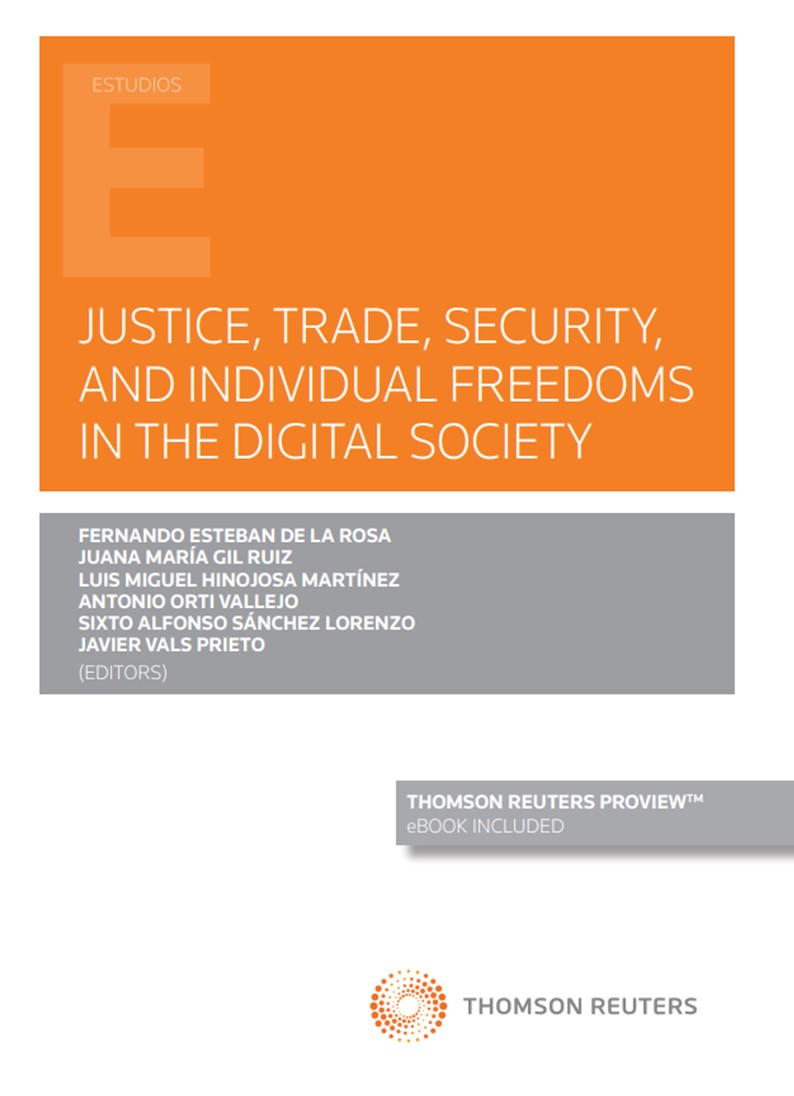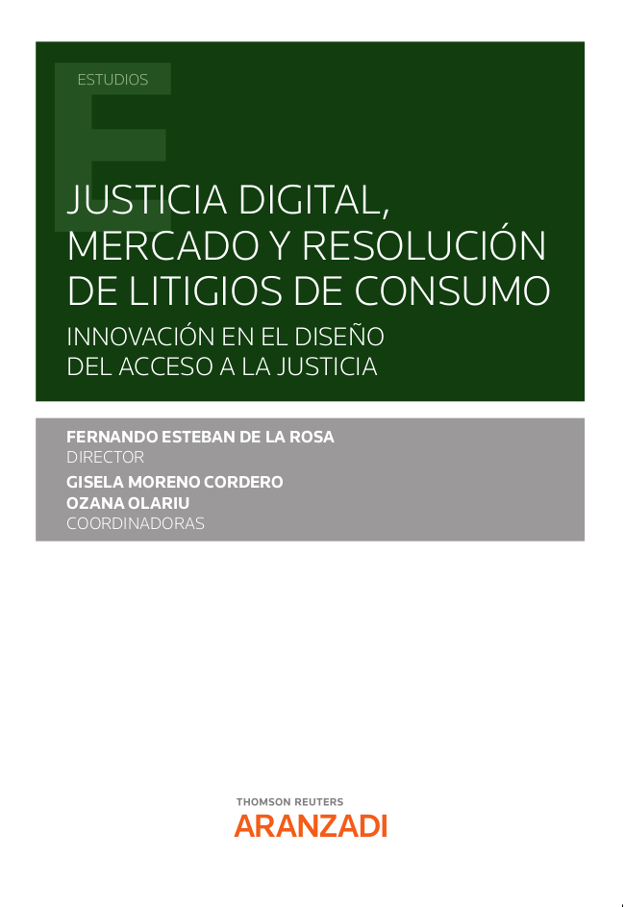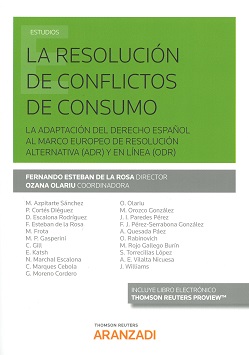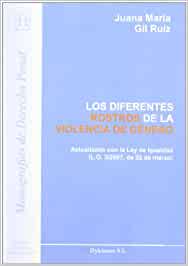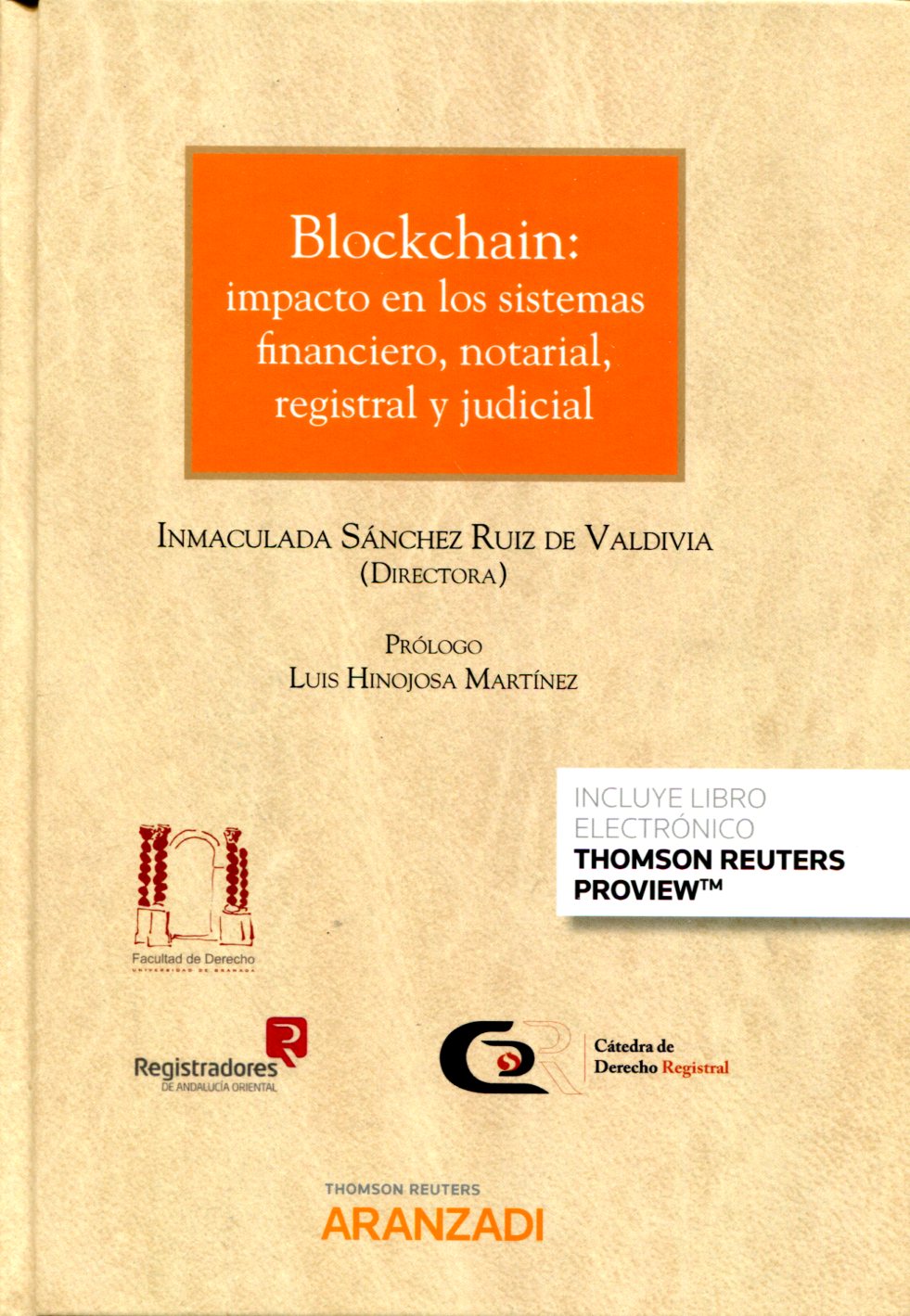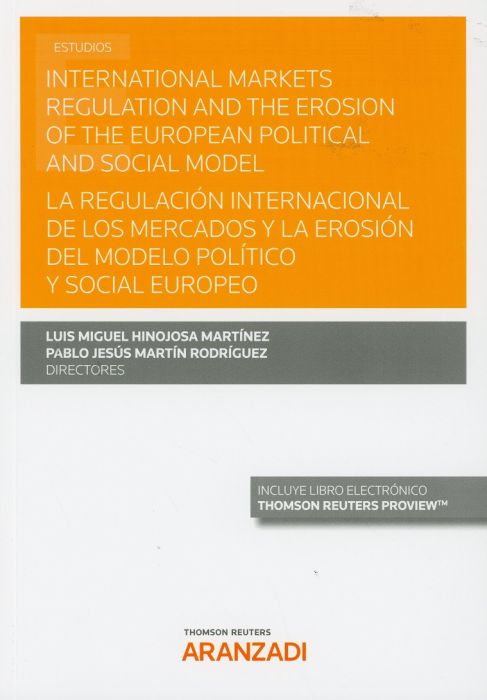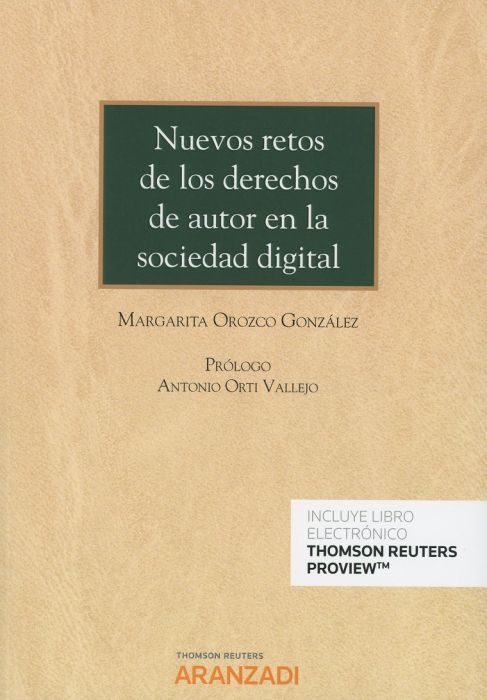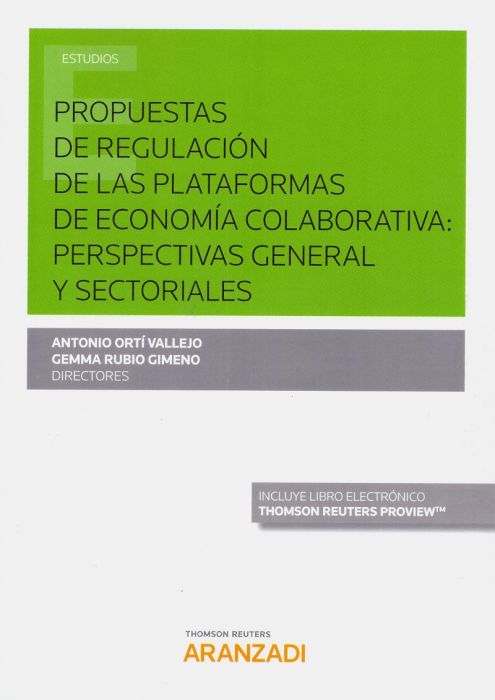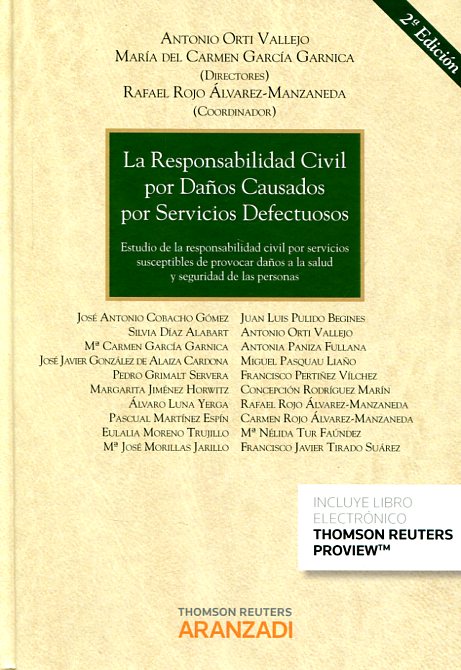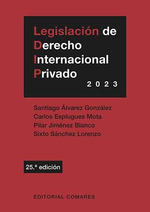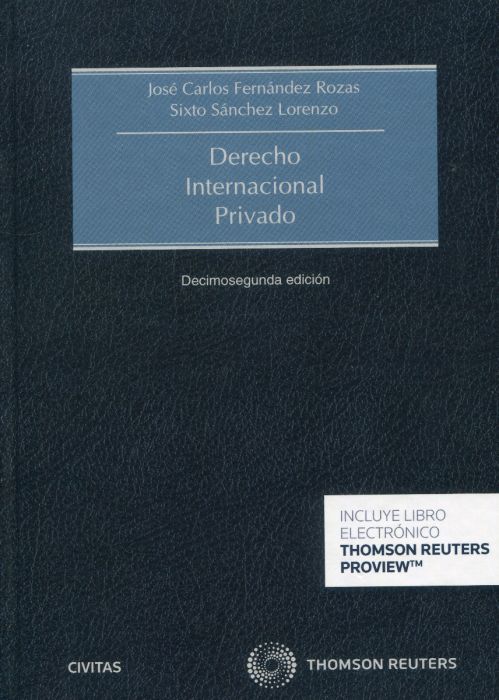Justice, trade, security, and individual freedoms in the digital society
- ISBN: 9788413913513
- Editorial: Editorial Aranzadi
- Fecha de la edición: 2021
- Lugar de la edición: Pamplona. España
- Colección: Estudios
- Encuadernación: Rústica
- Medidas: 24 cm
- Nº Pág.: 488
- Idiomas: Español

The main target audience for this book will be academics, postgraduate students, legal practitioners, and policy-makers. The book is also aimed at journalist, economists, political scientists, and anyone interested in exploring and finding new tools to regulate the digital society, approaching the legal challenges fostered by new technology, and wishing to understand how the development of the digital society has to be legally driven to protect fundamental rights. The topic is interesting for varied audiences from all over the world. The book will also be relevant for public authorities and legislative powers at the international, national, and regional levels to assist in the drafting of laws. The subject matter is particularly attractive for providing objective analysis in the current political debate related to the development of the digital society. The proposed book deals with highly topical legal issues, since the development of the new technologies requires new legal analysis. The book has been drafted in English by a multinational group of selected authors. This will facilitate the international projection of its publication all over the world. Addressing the legal analysis from different sectoral angles (artificial intelligence, digital justice, electronic contracts, digital trade, gender, security, and public law) increases the potential interest of the very diverse actors in this field.
CHAPTER 1
LEGAL INTELLIGENCE AT THE INTERSECTION BETWEEN AI AND LAW
LEONOR MORAL SORIANO
I.?? Basic notions of Artificial Intelligence
II.??Evolution of AI in Law
III.??Disruptive technologies in the legal domain
IV.??Legal argumentation and automated legal argumentation: two different rationales?
V.??Precedents as argumentative techniques
VI.??Precedents as raw data
VII.? The limits of AI in Law
VII.1. Machine legal reasoning does not exist
VII.2. Descriptive premises do not justify normative outcomes
VII.3. Machines cannot be creative
VII.4. Legal Education
VIII.? Bibliography
CHAPTER 2
ARTIFICIAL INTELLIGENCE AS A NEW COMPONENT OF THE JUSTICE SYSTEM: HOW IT CREATES NEW POSSIBILITIES, BUT HAS LIMITATIONS ESPECIALLY WITH REGARDS TO GOVERNANCE
JOHN ZELEZNIKOW AND FERNANDO ESTEBAN DE LA ROSA
I.?? Introduction: the challenge of incorporating Artificial Intelligence into justice systems
II.??Designing Artificial Intelligence and Expert Systems for the administration of justice
II.1. Technical possibilities
II.2. The limitations of using Artificial Intelligence in the Justice System
II.2.1. Examing discretion and the use of rule based Artificial Intelligence
II.2.2. Machine Learning: the need for cleaning data to avoid biases
II.3. The distinction between Decision Support and Decision-Making Systems
II.4. Self-Represented Litigants: Bargaining in the Shadow of the Law
II.5. Online Dispute Resolution Tools and Decision Support for Self-Represented Litigants
III.??Examples using Artificial Intelligence
III.1. First experiences
III.2. The Dutch platform Rechtwijzer
III.3. The British Columbia Civil Resolution Tribunal
III.4. The Internet Courts in China
III.5. The Estonian Project
IV.??Uses and Governance of Artificial Intelligence in the field of the judicial system: an European perspective
V.??Conclusion
VI.??References
PART II
GOVERNANCE IN THE DIGITAL ERA
CHAPTER 3
A FRAMEWORK FOR REGULATING AI IN THE PUBLIC SECTOR
ADAM PANAGIOTOPOULOS AND ROWENA RODRIGUES
I.?? Introduction
II.??Implications of the digitalised public sector
III.??Features, trends and challenges of regulating AI in the public sector
IV.??Framework for regulating AI in the public sector: A proposal of critical elements
V.??Conclusion
VI.??Acknowledgements
CHAPTER 4
THE ECHR’S DOCTRINE ON MASSIVE SECRET SURVEILLANCE OF DATA AND COMMUNICATIONS: ON THE NEED FOR A CONSTITUTIONAL THEORY ON MASSIVE SECRET SURVEILLANCE
MIGUEL AZPITARTE SÁNCHEZ
I.?? The problem
II.??Characterization and justification of massive surveillance
II.1. The massive nature of the measure
II.2. The covert nature of the measure
II.3. The grounds for massive surveillance
III.??The possible purposes of massive surveillance: criminal investigation and national security
III.1. Regulation in the European Convention on Human Rights and its application
III.2. Criminal investigation as the end to justify bulk surveillance
III.3. National security
III.3.1. Concept
III.3.2. Some positive appreciations
III.4. The reasons for the scant relevance
IV.??On the effects on fundamental rights
IV.1. The scope of protection and its limits
IV.2. Intensity of the interference and the level of safeguards
IV.2.1. The level of interference as an element that reduces the safeguards in bulk surveillance: exclusion from suspicion and judicial warrants
IV.2.2. The level of interference as an element reducing the safeguards in bulk surveillance: exclusion from the six minimum requirements.
IV.2.3. The grounds: the thesis of lower intensity
IV.3. When surveillance is only a threat
V.??Conclusions
VI.??Bibliography
VI.1. Case law
VI.1.1. –European Court of Human Rights–
VI.1.2. –Spanish Constitutional Court–
VI.1.3. –British Supreme Court–
CHAPTER 5
THE LEGAL-ADMINISTRATIVE REGIME OF MEDICINAL PRODUCTS IN THE DIGITAL SOCIETY ERA: CHALLENGES AND OPPORTUNITIES FROM A SPANISH PERSPECTIVE
FRANCISCO MIGUEL BOMBILLAR SÁENZ
I.?? Medicinal products in the digital society era
II.??Electronic medical prescriptions
III.??Purchase of medicinal products through the internet (e-pharmacies)
IV.??Dispensation of medicinal products using riders
V.??Dispensation of medicinal products using drones
VI.??Use of big data in clinical trials with medicinal products
VII.? Final thoughts by way of conclusion
VIII.? Bibliography
PART III
ELECTRONIC CONTRACTS AND DIGITAL TRADE
CHAPTER 6
DIGITAL TRADE: IN SEARCH OF APPROPRIATE REGULATION
MIRA BURRI
I.?? Introduction
II.??Digital disruption
II.1. Overview and terminological remarks
II.2 Digital technologies as general purpose technologies
II.3. Data and Big Data
III.??The effects of digitization on trade
III.1. Overview of developments and trends
III.2. Global value chains
III.3. Growing importance of services trade and servicification
III.4. Implications for domestic regulation
III.5. New types of trade barriers
IV.??Trade policy responses to the digital transformation
IV.1. The state of WTO Law with regard to digital trade
IV.2. Digital trade issues in preferential trade agreements
IV.2.1 Introduction
IV.2.2 The Comprehensive and Progressive Agreement for Transpacific Partnership and the United States Mexico Canada Agreement
V.??Assessing the state of affairs in digital trade governance and looking beyond
VI.??Bibliography
CHAPTER 7
CLICK-WRAP INTERNATIONAL CONTRACTS
SIXTO A. SÁNCHEZ LORENZO
I.?? Introduction
II.??Click-wrap contracts as standard contracts
II.1. Written form requirement
II.2. True consent: shrink, click, and browse-wrap contracts
II.3. Advertising, Matching, and Crowd-working click contracts
II.4. Click as an offer
II.5. Consideration
III.??Wrap contracts as international contracts
III.1. General rules on jurisdiction and applicable Law
III.1.1. Identifying international contracts
III.1.2. Identifying consumers and/or traders
III.1.3. Identifying domicile, residence, and establishment
III.1.4. Identifying place of performance in digital contracts
III.2. Forum selection clauses
III.2.1. Commercial contracts
III.2.2. Consumer contracts
III.3. Arbitration clauses
III.4. Applicable law clauses
III.4.1. Commercial contracts
III.4.2. Consumer contracts
IV.??Conclusions: best practices in international wrap contracts
V.??Bibliography
CHAPTER 8
A HUMANIST APPROACH TO PRIVATE INTERNATIONAL LAW FOR THE DIGITAL AGE
ILARIA PRETELLI
I.?? Introduction
I.1. A Humanist Approach
I.2. Digital Societies
II.??Platform Governance and Private International Law
II.1. Self-Governance of Platforms
II.1.1. Centralised Platforms
II.1.2. Decentralised Platforms
II.2. Functional Sovereignty and Global Governance
II.2.1. Tax Immunity
II.2.2. Surveillance, Propaganda and Social Media
II.2.3. Labour Standards
III.??Existing Connecting Factors
III.1. Location of Servers Storing Data
III.2. The Registered Office of the Issuer of Tokens
III.3. Presence, Targeting, Directing Activities, Operating in the Market as variations on the theme of Locus Lucri
III.3.1. Presence
III.3.2. Targeting and Directing Activities
III.3.3. Operating in the Market
IV.??Jurisdiction and Applicable Law in Relations Between Platform Users
IV.1. Irrelevance of Private International Law for Settling Litigation between Platform Users in Working Services Delivered in Person
IV.2. Relevant Connecting Factors in Assessing Users’ Liability in Torts and Contracts
IV.2.1. Victims of torts as weaker parties
IV.2.2. Contracts
IV.2.3. Performance of Working Services
V.??Jurisdiction and Applicable Law in Relations Between a User and the Platform
V.1. Decisiveness of Platforms’ Influence and Characterisation of Users as Platform Workers
V.1.1. Definition of Decisive Influence
V.1.2. Consequences of Decisive Influence (for Platform Users in particular)
V.1.3. Jurisdiction and Applicable Law
V.1.4. The Proper Law of Work-on-Demand
V.2. Significance of the Parties’ Imbalance as a Test for Party Autonomy
V.2.1. The Targeted Consumer
V.2.2. Platform to Business
VI.??The Importance of Digital Enforcement for Global Governance
VI.1 Intellectual Property Law
VI.2. Digital Amplification of Torts affecting Reputation, Protection of Honour and Privacy (Defamation, Hate Speech, Cyberbullying)
VII.? Conclusions
VII.1. New Rules on Jurisdiction
VII.2. Aligning Rome II with Brussels I in Matters of Torts
VII.3. ILO Standards for Private International Law
VII.4. Platform to Business, Party Autonomy and Significant Imbalance
VII.5. Digital Enforcement
CHAPTER 9
SMART CONTRACTS AND CONSUMER PROTECTION
MIGUEL ÁNGEL MORENO NAVARRETE
I.?? Disruptive technologies, consumers, and legal challenges
II.??Distributed ledger technology and blockchain
III.??Contribution of blockchain to consumer law and reliable legal traffic
IV.??Smart contracts according to Szabo’s vision
V.??Smart contracts, smart legal contracts, and crypto-contracts
VI.??Subjects, complex structure, digital identification, and oracles
VII.? The object of smart contracts, tokens, and digital assets
VII.1. On the intangibility of things
VII.2. The tokenization of things and behaviors; digital assets – tokens
VII.3. Token classes and token standards
VIII.? Consumer protection measures
IX.??Bibliography
PART IV
SECURITY, GENDER AND FUNDAMENTAL RIGHTS IN CYBERSPACE
CHAPTER 10
GENDER VIOLENCE AND THE USE OF ALGORITHMS AS AN EFFECTIVE TOOL FOR THE PROTECTION OF FUNDAMENTAL RIGHTS
NIEVES MACCHIAVELLI
I.?? Introduction
II.??Previous generalities. Clearing techniques
III.??Automation of judicial processes with a gender perspective. A witness case
IV.??Smart detection. The I-Map case
V.??Conclusions
VI.??Bibliographical references
CHAPTER 11
MORE THAN WORDS: ASPECTS OF ONLINE MISOGYNY
MARILÙ PORCHIA AND PAULO FERNANDO LÉVANO G.
I.?? Preliminary Remarks
II.??Juridical concept and legal framework of hate crimes
III.??Hate speech’s offline status
IV.??The challenges of OHS
V.??Italian legislation in perspective
VI.??Conclusive remarks
VII.? Bibliographical references
CHAPTER 12
PORNOGRAPHY RESTRICTIONS: A FEMINIST CHALLENGE IN THE DIGITAL SOCIETY
TASIA ARÁNGUEZ SÁNCHEZ
I.?? Introduction
II.??The development of the Internet and the global expansion of pornography
III.??The debate on legal limits to online pornography
III.1. Child pornography
III.2. Damage to women
III.3. Extreme pornography
III.4. The responsibility of websites
III.5. Access control to pornographic websites
IV.??Conclusion
V.??Bibliographical references
CHAPTER 13
CYBERCRIME, GLOBALIZATION, AND RISK SOCIETY
LORENZO MORILLAS CUEVA
I.?? Introduction
II.??Globalization and cybercrime
III.??Risk society: cybercrime versus cybersecurity
IV.??Are we moving toward an enemy’s criminal law in the face of computer crime?
V.??Conclusions
VI.??Bibliography

